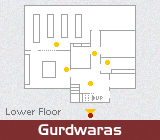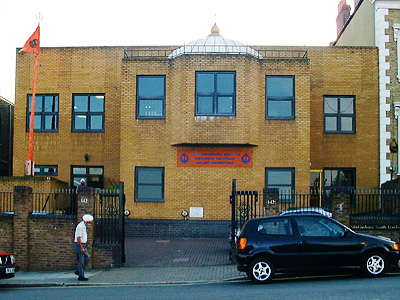 |
 |
|||
  |
 |
|||
The gurdwara |
|
|
This is the exterior of South London Sikh Gurdwara. A gurdwara is a Sikh place of worship. The word ‘gurdwara’ is Punjabi for ‘the gateway to the Guru’. Therefore, although gurdwaras have many different purposes, what ultimately defines a gurdwara is that it contains a Guru. The Guru that resides inside a gurdwara, however, is not human. The Guru is a holy book called the Guru Granth Sahib. Any house containing the Guru Granth Sahib can be called a gurdwara. Some gurdwaras have four doors leading into them. These doors represent the four castes of Hinduism. The doors remain open to all to show that everyone is equal and welcome inside the gurdwara. Outside the gurdwara flies the Sikh flag, the Nishan Sahib. |
|